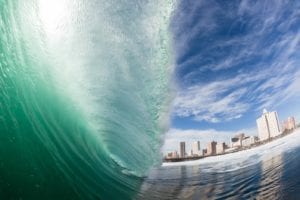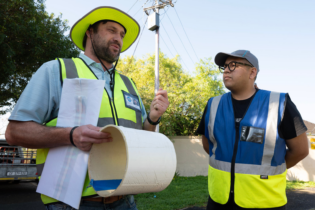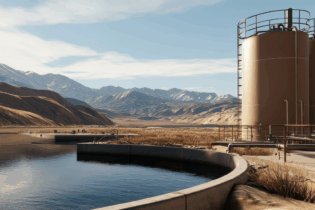Currently under way, the public-private sector project to revitalise Durban’s Point Waterfront forms an essential part of eThekwini Municipality’s initiative to redevelop and regenerate the inner city.
Durban Point Waterfront has long been identified as critical to both the retention and growth of Durban’s tourism industry. To this end, eThekwini Municipality, in partnership with the Durban Point Development Company, is working to revitalise the Waterfront. The R35 billion investment located on the South Point of the central beachfront is set to include several mixed-use developments, including upmarket residential and commercial developments, a retail mall, a hotel and leisure facilities. This will be undertaken in three phases over 10 to 15 years. “This initiative must be seen in the context of a city-wide development process, indicating that Durban is on the brink of change, that there is significant interest in the revitalisation of the CBD and the Point Precinct,” explains Nasreen Arabi, senior programme manager: Catalytic Projects Unit, eThekwini Municipality.Critical projects
In order to establish the Point Precinct development as a world-class facility and plan for increased development in this area, the city has committed to upgrading the bulk infrastructure watermain as well as the public realms in order to support future development. The Promenade extension, completed in November 2019, unlocked phase one of the Point Waterfront Development. At a cost of around R300 million, the Promenade was extended by 750 m. This is followed by the upgrade of Point Watermain, which got under way in February 2020. This will see the construction of a 4.1 km long DN800 steel pipe along Anton Lembede Street and Mahatma Gandhi Road. Expected to create numerous job opportunities, the R190 million project is planned for completion in June 2021. Included in these projects are public realm upgrades intended to improve pedestrian connectivity and the urban environment to ensure that the total user experience is enhanced and aligned with the Inner-City Regeneration Strategy.Point Watermain upgrade
According to Arabi, the Point Watermain upgradeproject forms part of a response to the Inner-City Regeneration Strategy based on the Inner-City Local Area Plan (LAP). It is also a response to the dilapidating infrastructure that requires upgrading for future growth of the area. The current water demand for the Durban Inner-City is 28 Mℓ/day. Future flow from the Point development will add another 3.5 Mℓ/day. The Point development is also considered a high-risk area with respect to the provision of water for firefighting due to the proposed high-rise buildings, thereby exaggerating the peak flow. The 2040 future demand allowing for the planned Inner-City Regeneration is 50 Mℓ/day. The City understands that it is unlikely that the Montille Reservoir and lower Umgeni system will meet this future demand, so alternative and innovative supplies are being considered by eThekwini Municipality, including a Remix Plant (recycling plant) situated at the Central Wastewater Treatment Plant across the harbour entrance on the Bluff.Potable water can be reverse-fed from this Remix Plant across the harbour tunnel and into the bulk supply main along Mahatma Gandhi Road and into the Durban inner city. In order to accommodate this alternative, a marginal increase in the optimal pipe size for the bulk main along Mahatma Gandhi Road has been made.
The pipeline is situated within the water table in an aggressive saltwater environment. Special protection to the pipe coating, together with cathodic protection, is required to prevent corrosion of the steel pipeline. Furthermore, the pipeline is constructed within a roadway that comprises numerous existing services (sewer, stormwater, electrical), requiring both a challenging horizontal and vertical design to avoid relocation of these services. This has resulted in deep concrete chambers for valves that will all have to be constructed with the roadway. The deep vertical alignment will, in places, require dewatering and shoring of trenches in excess of 3 m deep during construction.







